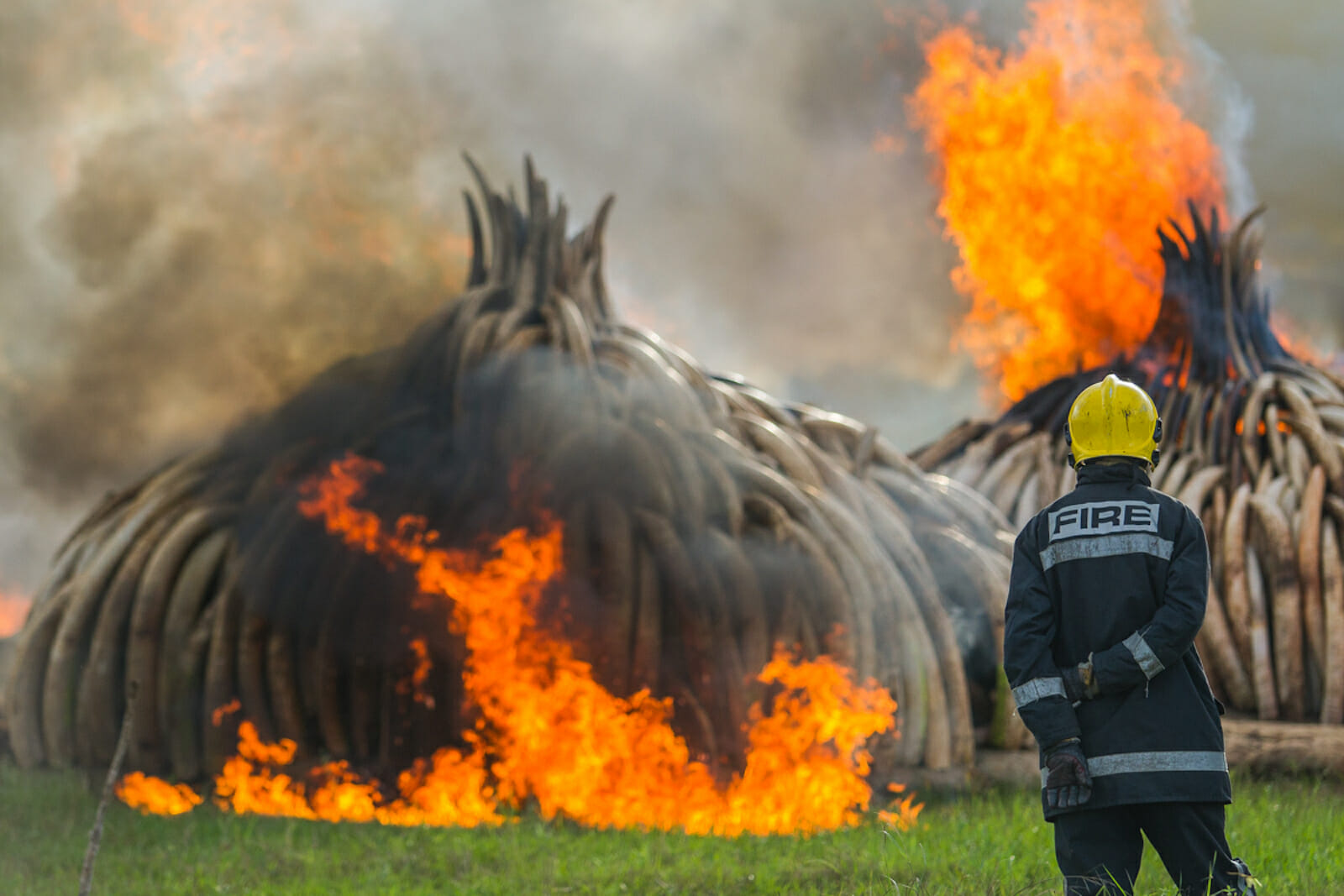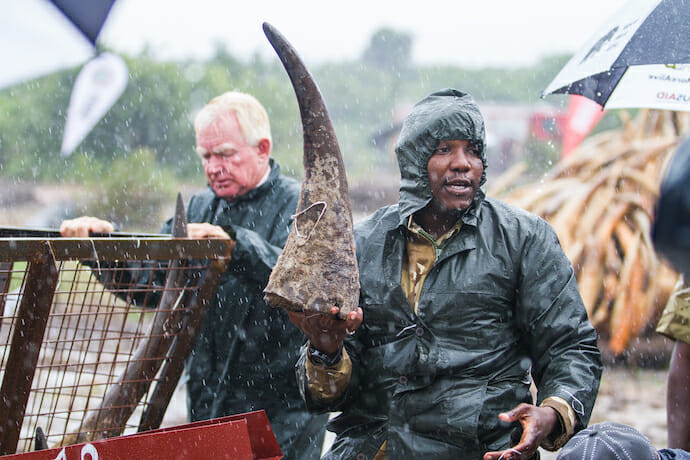
The Ivory Ban: Kenya Lights a Fire
Both the China Dailey Global and Uganda’s Chimp Report are putting Kenya’s ivory ban back in the news. Poachers are still involved across Africa and the biodiversity crisis is steadily deepening. Altering land usage, changing climate and human development make this an intertwined global issue. To communicate biodiversity’s huge importance as an issue unto itself, and as a measure of human global stewardship, no species comes close to the elephant. The species is seen in history as both an ally and as a domesticated helper and is symbolic of the wilderness and its unconquerable otherness.
Countless cultures have coveted ivory which has been bargained over, on some scale every day for millennia. History and archeology tell us it has been the same since we first have records. If we were to have a currency to measure our ability to understand and react to the environmental crisis we face ivory might be a good candidate. We all see it. Everyone accepts it has value, But we just can’t decide what to do.

Should we ban its sale and traffic? Or should we use the benefit of its sale to set right the wrongs done its rightful proprietor? In the complex world, we live in we argue this point on the world stage within mandated international organizations or in our consciousness when the rush of time leaves an unscheduled moment. The CITES meets regularly but a definitive conclusion is elusive. At first blush, banning the trade makes sense. After hearing all the counter-arguments and the amount of money that could go to finding new solutions, one can understand the difficulty in finding consensus. Take a look at a country like Tanzania with a stockpile of a hundred and thirty tons. For a developing country not to investigate access to that kind of money is unthinkable. Once you start to do the arithmetic – one thousand five hundred a kilo – the danger of the slippery slope is just inches away.
CITES may be trying its best, but it’s not providing the leadership needed to stand up and show the way. I lived in Africa for thirty years and admit to succumbing to local prejudice. I suffer from a very common ailment in Africa of Kenya Caution. There are fifty-four countries in Africa and everyone is rich in character and potential. But somehow it is always the Kenyan voice that speaks for the continent and that creates a distinct, most often not stated, discomfort.
Kenya is accused of self-aggrandizement, in a general sort of way so often and from so many angles that the complaint has faded into the background. When they announced their big burn plan there was a mixed reaction colored for the most part by the fact the Kenyans always get the publicity. But the sheer scale of the Big Burn started to sink in. One hundred and five tons. Almost as much as Tanzania has in hand. The Kenyan government would call together journalists, environmentalists, celebrities and international opinion makers and burn their ivory stock. Ninety tones of ivory – plus their Rhino horns. An African country voluntarily burning over a hundred million dollars of stock just to make a point!
I was invited as well and drove up to Nairobi from Arusha in Tanzania to see the burn. My natural inclination, therefore, was to give the Kenyan option consideration but not preference. I would diligently sniff around before coming to a conclusion. I spoke with Americans, Japanese, Nigerians, South Africans, and Chinese. Many of them shared my hesitancy for an affair being organized by a country which so diligently sought a profile. After the burn, I followed the difficulties at the CITES conference to bring consensus to the issue. Tanzania, Zimbabwe, South Africa, and others wanted some way in which to realize the value of their stockpiles. The Chinese have blocked their market but there are too many other options for that to have weight.
Se we are blocked on the most symbolic of all biodiversity questions. We don’t have the vision, the courage nor the conviction to find a way. This bodes ill for the planet’s changing decisions that are aligning themselves in the near future. It irks me to admit the Kenyans are right. The burn is the kind of decisive action that is needed. Time is short. Clear immediate connections between our actions and our future need to be drawn. The more time that passes since the burn, and the more I see the global reluctance to take on what is in effect a global crisis and the more I agree with the Kenyans. Sometimes you have to light a fire to get some attention.

